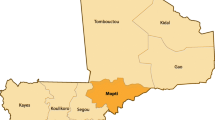Abstract
Background
Mothers are the nurturing pillar of the family. When a woman dies or becomes ill, either during or after giving birth, the consequences have the potential to affect not only the woman herself, but her family, society and the nation as well.
Objectives
The study was designed to evaluate the maternal mortality ratio in a tertiary care hospital, assess the demographic profile, causes of maternal mortality, type of delay, and to suggest remedial measures for improvement.
Methods
A retrospective study was done from Jan 2013 to Dec 2016 at a tertiary care hospital in New Delhi. The medical records of all maternal deaths over a period of 4 years were reviewed and analyzed.
Results
The Maternal mortality ratio in the study period was 361.71/100,000 live births. The number of maternal death was 364. Unbooked cases accounted for the majority, i.e., 322, booked being 29 and registered 13. Two hundred and eleven cases were referred from other centers. Maximum deaths occurred between 21 and 30 years (73.07%). Anemia was widely prevalent. Most maternal deaths were due to direct causes like hypertensive disorders (28.02%), pregnancy-related infections (20.87%), and hemorrhage (12.36%). Among indirect causes, anemia, hepatitis, heart disease and respiratory illness accounted for 15.93, 11.53, 3.29 and 5.49%, respectively. Type I delay was most common (64.28%).
Conclusion
Strengthening of the peripheral centers, hiring competent staffs and adequate blood bank facilities together with reference linkages must be done. Auditing the causes for maternal mortality is extremely helpful to identify the preventable causes and delays.
Similar content being viewed by others
References
Park K. Preventive medicine in obstetric, paediatrics and geriatrics: Park’s text book of preventive and social medicine. 24th ed. 2015.
United Nations Millennium Development Goals Report. 2015.
Association of Health Care Journalists, American Hospital Association. 2014.
The WHO application of ICD-10 to deaths during pregnancy, childbirth and puerperium: ICD MM. 2012.
Jadhav CA, Gavandi P, Shinde MA, et al. Maternal mortality: five year experience in tertiary care centre. Indian J Basic Appl Med Res. 2013;2(7):702–9.
Rajeshwari Shobha. Maternal mortality in an urban tertiary care hospital of south India. Indian J Obstet Gynaecol Res. 2016;3(1):32–7.
Khandale SN, Kedar K. Analysis of maternal mortality: a retrospective study at tertiary care centre. Int J Reprod Contracept Obstet Gynecol. 2017;6:1610–3.
Sundari KP, Jayanthi RD, Ramasamy B. Trends in maternal mortality in a tertiary care hospital. Int J Reprod Contracept Obstet Gynecol. 2016;5:3659–62.
Murthy BK, Murthy MB. Maternal mortality in tertiary care hospital: a 10 yr review. Int J Prevent Med. 2013;4(1):105–9.
Montgomery AL, Ram U, Kumar R, et al. The Million Death Study Collaborators. Maternal mortality in India: causes and healthcare service use based on a Nationally Representative Survey. PLoS ONE. 2014;9(1):e83331. https://doi.org/10.1371/journal.pone.0083331.
Lale S, Doris C, Alison G, et al. Global causes of maternal death: a WHO systematic analysis. Lancet Glob Health. 2014;2(6):e323–33.
Author information
Authors and Affiliations
Corresponding author
Ethics declarations
Conflict of interest
Pratima Mittal, Garima Kapoor, Nikita Kumari, Bindu Bajaj declare that they have no conflict of interest.
Human Participants
The data were gathered from the individual case sheets and facility-based maternal death review forms. These forms were filled by the treating doctor and reviewed by the supervising Faculty within 24 h of the death of the women. Hence, the institutional review body explicitly approved the study.
Informed Consent
No consent taken as there was no intervention with the patient for the purpose of study. Only the data were gathered from individual case sheets and facility-based maternal death review forms.
Additional information
Pratima Mittal is a Professor and Head of Department, Department of Obstetrics and Gynecology, VMMC & Safdarjung Hospital, New Delhi; Garima Kapoor is an associate professor, Department of Obstetrics and Gynecology, VMMC & Safdarjung Hospital, New Delhi; Nikita Kumari is a Junior Consultant at Sitaram Bhartia Institute of Science and Research and Ex-Senior Resident, Department of Obstetrics and Gynecology, VMMC & Safdarjung Hospital, New Delhi; Bindu Bajaj is a Senior Specialist and Associate Professor, Department of Obstetrics and Gynecology, VMMC & Safdarjung Hospital, New Delhi.
Rights and permissions
About this article
Cite this article
Mittal, P., Kapoor, G., Kumari, N. et al. Review of Maternal Mortality at a Tertiary Care Hospital: What Have we Achieved?. J Obstet Gynecol India 69, 149–154 (2019). https://doi.org/10.1007/s13224-018-1129-1
Received:
Accepted:
Published:
Issue Date:
DOI: https://doi.org/10.1007/s13224-018-1129-1




